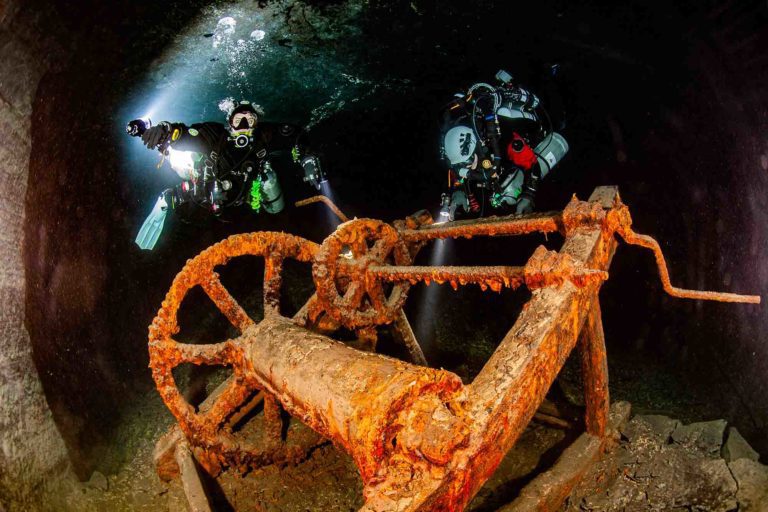Cave diver KURT STORMS is back with his account – and photographs – of a recent underground outing, in the restricted-access Denée mine
A lot of black marble used to be mined in Belgium, especially around the province of Namur. The industry was important to the country, and our marble was exported worldwide. One of the sites from which it came was the Denée mine.
Denée is a village that since 1977 has been part of the municipality of Anhée in Namur. It is known for Maredsous Abbey, a Benedictine monastery that lies nearby, but also for the long-closed Carriere de Denée, a well-known attraction for Belgian and Dutch cave divers.
Also read: Shipwreck silver, brass – even a Model T Ford!
I took my first steps in cave diving in this mine, which is an hour’s drive from my house, and regularly spend time there with my buddy Willem Verrycken.
The site is fenced off, and to gain access you have to belong to one of the Belgian speleological clubs, VVS or UBS. I’m a member of the former through my caving club Science Explorers.
It was time to take my wife Caroline and former student Nico into this beautiful underwater world. Both had recently become members of the VVS (Association of Flemish Speleologists), and had never dived there before, so at their request we set off on a day-trip.
Nico was to pick up the key that would give us access from a locker at the VVS office – I had been the key manager at one time.
‘That’s going to be a struggle!’
We arrived at 10am, and as usual Nico was eager to get to the car park. We drove into the narrow lane so that we could park close to the entrance. Before I briefed the others on what we might encounter, I laughingly revealed to them the sort of descent required even before we started diving, just to gain access to the mine.
Soon I was listening to their deep sighs: “Do we really have to go down there, and up again later? That’s going to be a struggle!”
After the briefing we packed our equipment into speleo bags to make it easier to carry. The steep descent called for the use of a rope to keep us stable – it’s quite an athletic endeavour, especially later when you have to go back up.
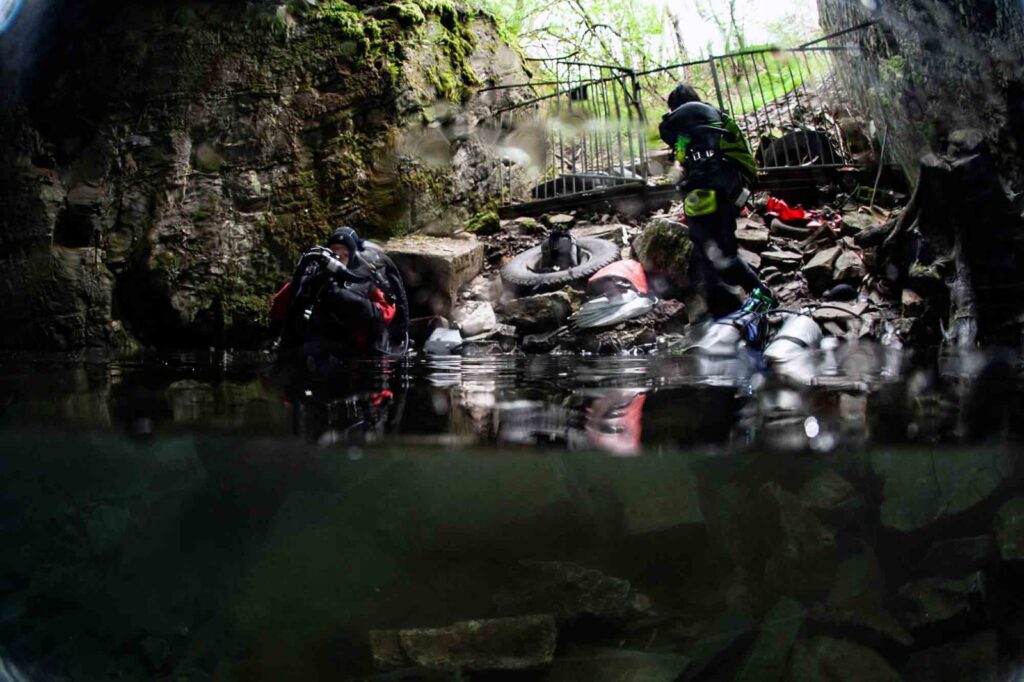
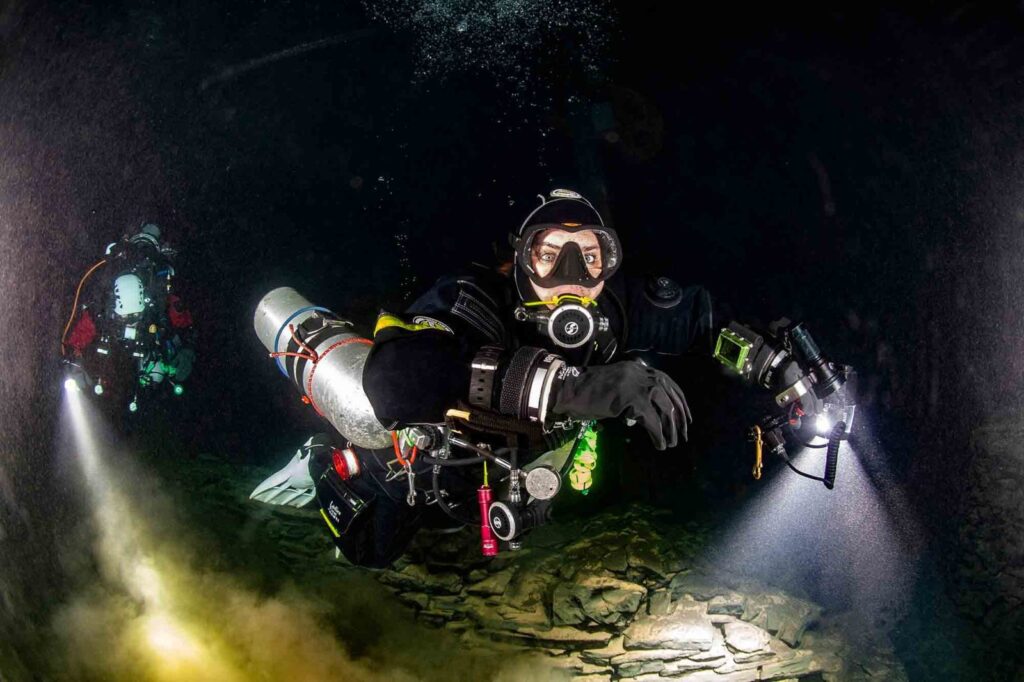
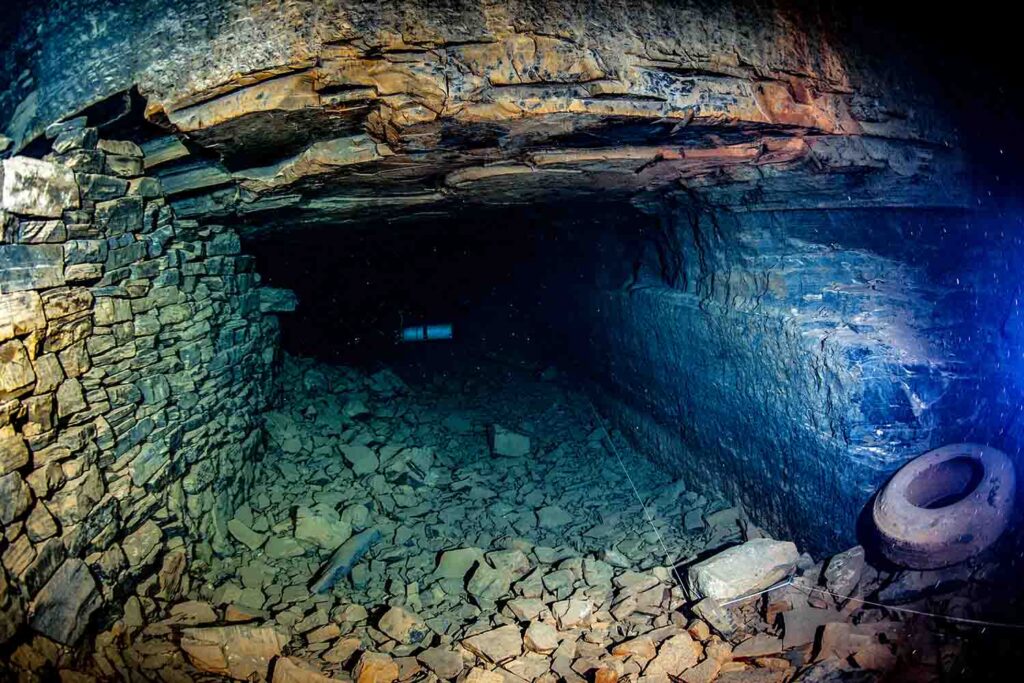
There is a lot of rubbish down at the bottom, and even though two years ago two containers full of garbage had been removed from the site we could still see the car tires, old fridges and even a small car that had been dumped in the past.
After a few trips up and down, we were ready to put on our drysuits and equipment. At the water’s edge we carried out our S-drill, went over the dive, and gathered under water for the bubble check as a team of three.
In the mine the corridors are large and the very clear water affords incredible visibility. After finning about 50m we came to a fork and, leading the way, I headed right.
We passed various remains, including a large wheel. I signed to the others to pose there for a moment so that I could take some photos. Then we continued down the corridor. Here and there I turned around to take pictures and check that everything was OK with the team, especially as they were here for the first time.
We stopped at the location of a familiar pulley hanging from the ceiling. It’s difficult to imagine now how people used to get the slate up from the mine.
After about 30 minutes we returned to the exit. I felt overwhelmed by the others’ wonderment, expressed in beautiful words.
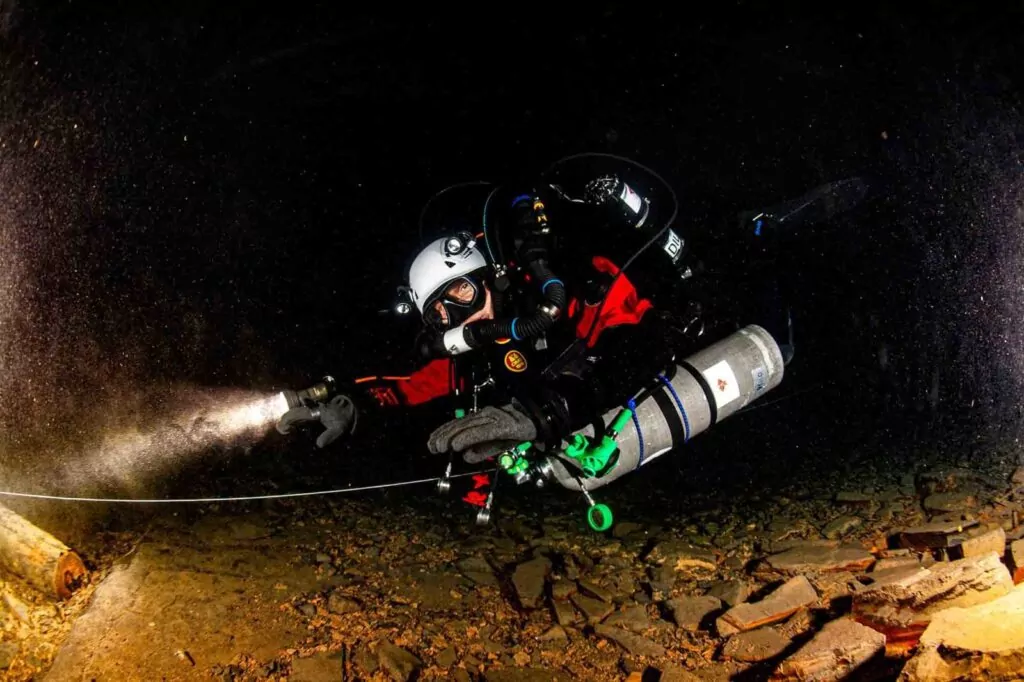
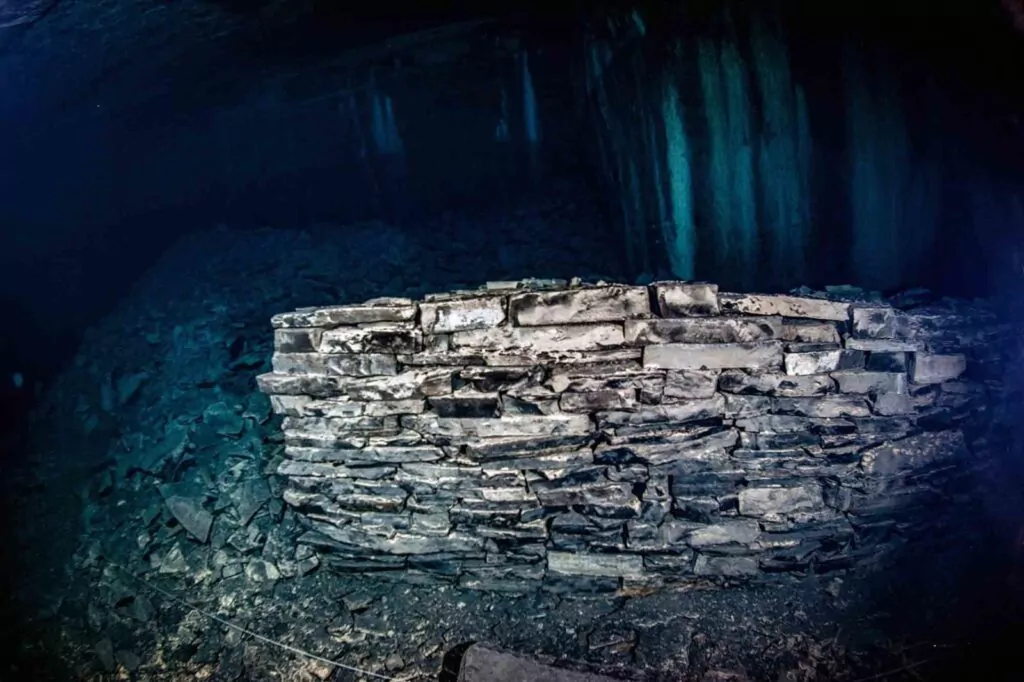
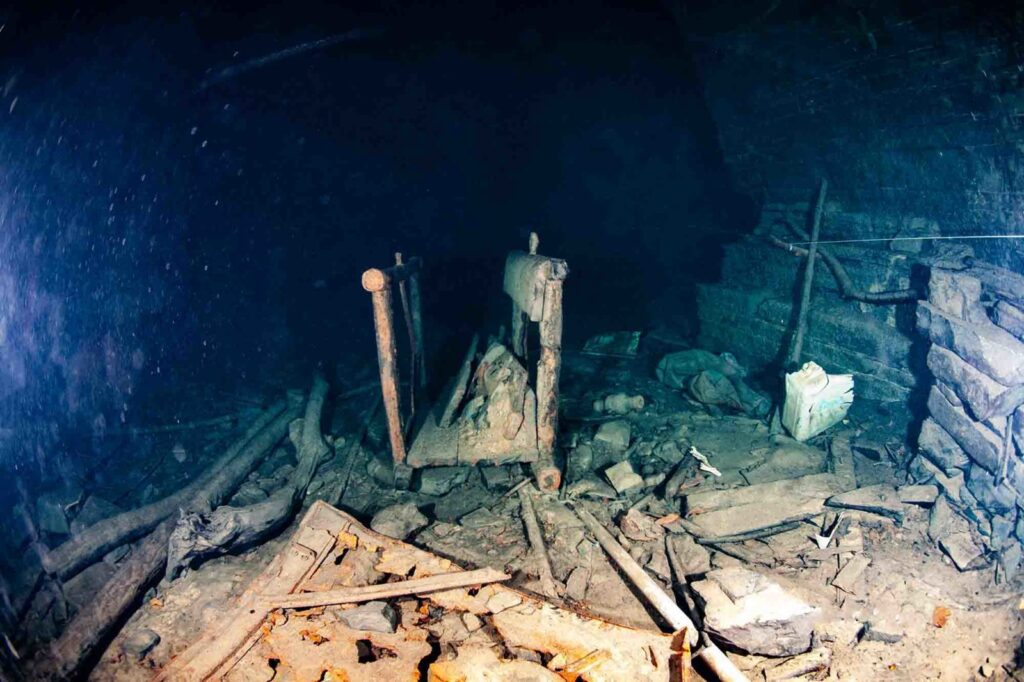
We took only a five-minute break before setting off again, and this time took the left-hand passage, which led to a large chamber. From there you can climb a ladder across a chasm and emerge into another part of the mine.
We didn’t take that choke route on the day because Nico was using a rebreather. I let the others look around the chamber and then signed to them, indicating an air-bubble into which we could poke our heads for a bit. I could see from the others’ eyes that both of them were loving the whole experience.
After a minute or so we descended under water again and I gave the sign to head for the exit.
Everyone was feeling satisfied following the dive, and we started the journey back up the hill, pulling ourselves up via the rope and stopping every now and then before, panting, we reached the cars. We did have to repeat this exercise several times, but the satisfaction of our dive eased the pain.

Denée is a very beautiful mine, but it does call for some commitment when it comes to the journeys to and from the water’s edge. It’s the ideal place to hone skills, because you don’t become a cave diver all in one day – it’s a process of years, and a lot of training is necessary in that time.
But for me, diving beneath a ceiling remains the most beautiful experience there is in life.
Also by Kurt Storms on Divernet: Truffe or Dare. Other mine-diving features include A Tale of Two Mines by Stefan Panis, Mining a Forgotten Past in Cornwall by Ben Dunstan and Beyond the Yellow Train by Martin Strmiska

Kurt Storms
Kurt Storms is a Belgian military, underwater cave and mine photographer/ explorer and technical/cave/rebreather instructor with a passion for deep extended-range cave dives. He is founder and CEO of Descent Technical Diving.
